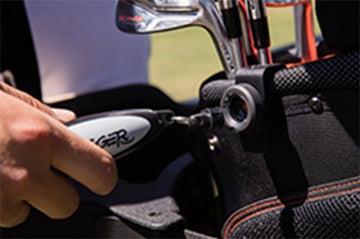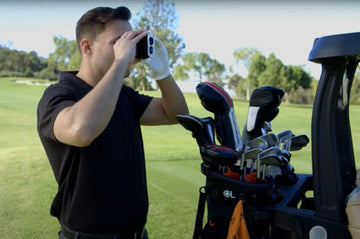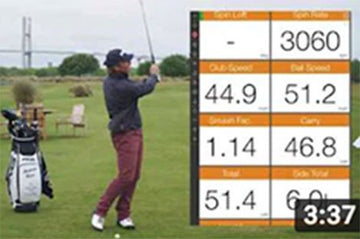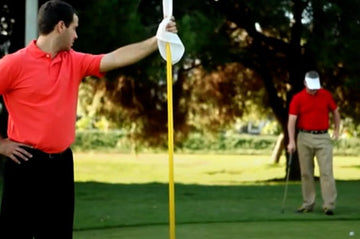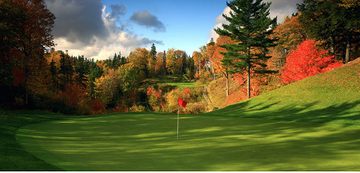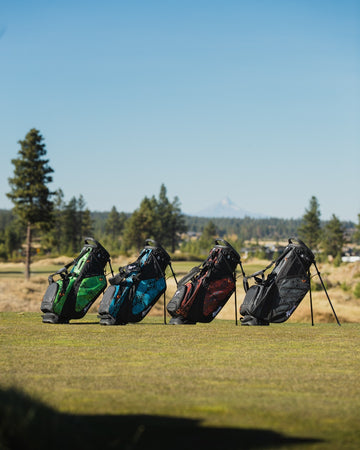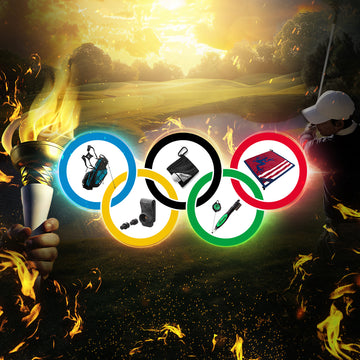Golf Tips: Putting Speed
by
Jeremiah Bohannon
on
Jul 28, 2014

The need for speed, or perhaps the need for less speed. How much speed should our putts have anyway? Some golfers prefer to "die" their putts in the hole. Those types of putts will drop if the ball catches any part of the hole. Other golfers prefer to hit the back of the cup with their putts, a more aggressive and solid approach. Renowned short game expert Dave Pelz says the best putts are at a speed which would end up around 11 inches past the hole, if they were to miss.
Is There a "Right" Speed?
Realistically the speed a putt "should" be is part player personality, but a larger part situational. Here are some scenarios:
When considering dying a putt at the hole, logic would tell us that this is a good approach for fast putts or downhill putts. We certainly don't want to "pound" a fast/downhill putt for if it misses, we will be left with a very long return putt.
Conversely we don't want to high slow or uphill putts lightly. Light putts in uphill/slow situations will probably die before getting to the hole. And as a wise man once said, 90% of all short putts don't go in.
Break
Putting speed is also directly related to the amount of break in the putt. For example, a medium pace putt on a green may break six feet. When struck harder one may still hole the putt, but the break may only be three feet. When struck softer, the putt may break nine feet.
Conclusion
Can we come to a conclusion on speed? When considering the miss we certainly can. The best putting speed is one which adapts to the current situation and leaves a tap-in return putt if missed.
 The need for speed, or perhaps the need for less speed. How much speed should our putts have anyway? Some golfers prefer to "die" their putts in the hole. Those types of putts will drop if the ball catches any part of the hole. Other golfers prefer to hit the back of the cup with their putts, a more aggressive and solid approach. Renowned short game expert Dave Pelz says the best putts are at a speed which would end up around 11 inches past the hole, if they were to miss.
Is There a "Right" Speed?
Realistically the speed a putt "should" be is part player personality, but a larger part situational. Here are some scenarios:
When considering dying a putt at the hole, logic would tell us that this is a good approach for fast putts or downhill putts. We certainly don't want to "pound" a fast/downhill putt for if it misses, we will be left with a very long return putt.
Conversely we don't want to high slow or uphill putts lightly. Light putts in uphill/slow situations will probably die before getting to the hole. And as a wise man once said, 90% of all short putts don't go in.
Break
Putting speed is also directly related to the amount of break in the putt. For example, a medium pace putt on a green may break six feet. When struck harder one may still hole the putt, but the break may only be three feet. When struck softer, the putt may break nine feet.
Conclusion
Can we come to a conclusion on speed? When considering the miss we certainly can. The best putting speed is one which adapts to the current situation and leaves a tap-in return putt if missed.
The need for speed, or perhaps the need for less speed. How much speed should our putts have anyway? Some golfers prefer to "die" their putts in the hole. Those types of putts will drop if the ball catches any part of the hole. Other golfers prefer to hit the back of the cup with their putts, a more aggressive and solid approach. Renowned short game expert Dave Pelz says the best putts are at a speed which would end up around 11 inches past the hole, if they were to miss.
Is There a "Right" Speed?
Realistically the speed a putt "should" be is part player personality, but a larger part situational. Here are some scenarios:
When considering dying a putt at the hole, logic would tell us that this is a good approach for fast putts or downhill putts. We certainly don't want to "pound" a fast/downhill putt for if it misses, we will be left with a very long return putt.
Conversely we don't want to high slow or uphill putts lightly. Light putts in uphill/slow situations will probably die before getting to the hole. And as a wise man once said, 90% of all short putts don't go in.
Break
Putting speed is also directly related to the amount of break in the putt. For example, a medium pace putt on a green may break six feet. When struck harder one may still hole the putt, but the break may only be three feet. When struck softer, the putt may break nine feet.
Conclusion
Can we come to a conclusion on speed? When considering the miss we certainly can. The best putting speed is one which adapts to the current situation and leaves a tap-in return putt if missed.
 The need for speed, or perhaps the need for less speed. How much speed should our putts have anyway? Some golfers prefer to "die" their putts in the hole. Those types of putts will drop if the ball catches any part of the hole. Other golfers prefer to hit the back of the cup with their putts, a more aggressive and solid approach. Renowned short game expert Dave Pelz says the best putts are at a speed which would end up around 11 inches past the hole, if they were to miss.
Is There a "Right" Speed?
Realistically the speed a putt "should" be is part player personality, but a larger part situational. Here are some scenarios:
When considering dying a putt at the hole, logic would tell us that this is a good approach for fast putts or downhill putts. We certainly don't want to "pound" a fast/downhill putt for if it misses, we will be left with a very long return putt.
Conversely we don't want to high slow or uphill putts lightly. Light putts in uphill/slow situations will probably die before getting to the hole. And as a wise man once said, 90% of all short putts don't go in.
Break
Putting speed is also directly related to the amount of break in the putt. For example, a medium pace putt on a green may break six feet. When struck harder one may still hole the putt, but the break may only be three feet. When struck softer, the putt may break nine feet.
Conclusion
Can we come to a conclusion on speed? When considering the miss we certainly can. The best putting speed is one which adapts to the current situation and leaves a tap-in return putt if missed.
The need for speed, or perhaps the need for less speed. How much speed should our putts have anyway? Some golfers prefer to "die" their putts in the hole. Those types of putts will drop if the ball catches any part of the hole. Other golfers prefer to hit the back of the cup with their putts, a more aggressive and solid approach. Renowned short game expert Dave Pelz says the best putts are at a speed which would end up around 11 inches past the hole, if they were to miss.
Is There a "Right" Speed?
Realistically the speed a putt "should" be is part player personality, but a larger part situational. Here are some scenarios:
When considering dying a putt at the hole, logic would tell us that this is a good approach for fast putts or downhill putts. We certainly don't want to "pound" a fast/downhill putt for if it misses, we will be left with a very long return putt.
Conversely we don't want to high slow or uphill putts lightly. Light putts in uphill/slow situations will probably die before getting to the hole. And as a wise man once said, 90% of all short putts don't go in.
Break
Putting speed is also directly related to the amount of break in the putt. For example, a medium pace putt on a green may break six feet. When struck harder one may still hole the putt, but the break may only be three feet. When struck softer, the putt may break nine feet.
Conclusion
Can we come to a conclusion on speed? When considering the miss we certainly can. The best putting speed is one which adapts to the current situation and leaves a tap-in return putt if missed.












